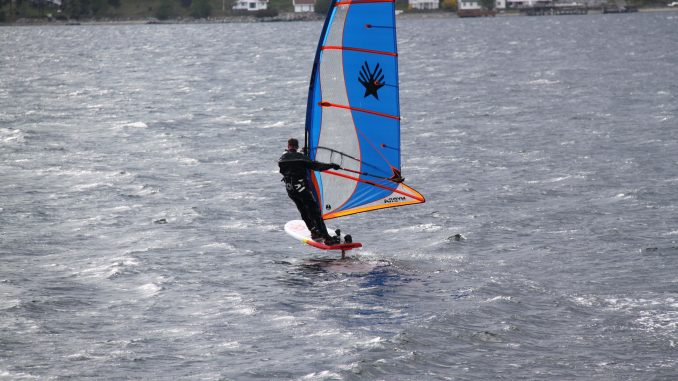
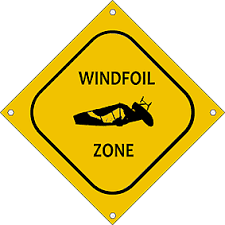 Romain Jourdan of windfoilzone.com spent the summer getting to grips with Ezzy’s windfoil specific sail the Hydra. Featuring both Ezzy’s 5m and 7m version this is what Romain had to say.
Romain Jourdan of windfoilzone.com spent the summer getting to grips with Ezzy’s windfoil specific sail the Hydra. Featuring both Ezzy’s 5m and 7m version this is what Romain had to say.
Words: Romain Jourdan
Pics: Jean-Luc Boulland
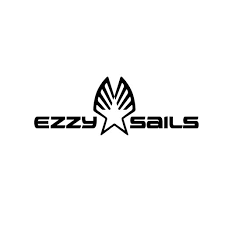 The Ezzy Hydra was launched at the end of 2018 and created a lot of noise in the windsurf community due to the dramatic new look of the sail, with an oversized bottom batten. Critics were numerous, however the fact that the sail was designed by David Ezzy was a good enough reason to give the sail a try before judging it. David Ezzy has been designing sails for several decades and his expertise, attention to detail and high-quality, and innovative mind has no need to be proven anymore.
The Ezzy Hydra was launched at the end of 2018 and created a lot of noise in the windsurf community due to the dramatic new look of the sail, with an oversized bottom batten. Critics were numerous, however the fact that the sail was designed by David Ezzy was a good enough reason to give the sail a try before judging it. David Ezzy has been designing sails for several decades and his expertise, attention to detail and high-quality, and innovative mind has no need to be proven anymore.
I ordered the Ezzy Hydra 5.0m2 and 7.0m2 and have tested them for you guys to share my impressions about this innovative design.
Windfoil vs windsurf
But first of all, let me present three major differences between windfoiling and regular windsurfing, as this will help you understand the concept behind the Ezzy Hydra, and its differences versus a normal freeride sail:
As you foil faster than the wind, you get more apparent wind and the wind angles are different, shifting more forward.
In windsurfing, you need a powerful sail all the time. When windfoiling you only need a powerful sail to get flying, then you want your sail to be as light and controllable as possible in flight.
When foiling you are not touching the water surface anymore, and your sail doesn’t need to flex as much to absorb the chop.
These are the main reasons why a dedicated foil sail may be more efficient than a normal sail.
The big challenge for the brands is to come up with a solution which will take advantage of these characteristics, while creating a more efficient sail for foiling.
Here is Ezzy’s solution to the windfoil sail challenge:
I discussed with David Ezzy (check out the interview with David Ezzy) who explained to me the concept behind the Hydra: The design brief for the Ezzy Hydra foiling sail had some very specific goals to accomplish:
- Be more efficient than a regular freeride sail.
- Be less sensitive to gusts.
- Create early power but stay stable and controllable in flight.
- Be super light weight.
The Hydra has several features that respond to these requirements
The long foot batten on the Hydra creates a very efficient sail, taking advantage of the “free space” between the sail and the board. This sail would not work for normal windsurfing, as the foot of the sail would hit the water all the time, but it works well for foiling, as the board is flying above the water. This improves the efficiency of the sail.
The total weight of the sail has been reduced by creating a powerful sail without cambers and with fewer battens and ¾ battens (as seen on the Ezzy Taka). Overall, this change helps save close to one kilo in weight compared to other sails of the same size. A lightweight sail is key to flying early, and not to mention the feeling of flying while having almost nothing in your hands is such a great feeling.
The ¾ batten is a clever feature: It’s not only saving some weight but it also helps to pump, by filling up the sail with air it makes the sail’s profile flatter during flight and especially while riding upwind.
Most of the sail’s surface is situated down below, which makes the sail more stable in the gusts, as it does not throw you off balance that easily. The sail pressure keeps right in front of you, and gives you a better foiling experience.
The test:
Test conditions
I used the Slingshot Wizard 125 L board with the Slingshot Hoverglide infinity 76.
My weight is 79 kilos and I tested out the 5.0m2 and 7.0m2 Ezzy Hydra sails with side-shore winds varying from barely any wind and flat water, to 30 knot gusts and 1/2 meter swell, mainly side shore winds.
I have primarily used the 7.0m2 which is ideal in my local spot working with thermal winds ranging from 10-15 knots. I have also had the chance to try the 5.0m2 a few times as well.
Rigging
The sail is really easy to rig without cambers. I only need 3 minutes to put on the mast and the boom and pull the downhaul and the outhaul. One thing that you need to remember though is: due to the super long bottom batten, you’ll need to drop the boom on from the top of the sail, and not from the bottom of the sail as you normally would do.
There are some smart and helpful tuning marks at the bottom of the sail and at the outhaul to let you tune the sail perfectly, according to your specific conditions: light wind settings, medium wind settings. You can make the sail really flat when it’s windy, and create a deep curve in light wind.
An important tip as well: Don’t forget to pull on the strap at the very bottom of the sail to tighten the foot of the sail. This is not a common tuning tool on all freeride sails, but on the Hydra, we experienced that it had a significant impact on the efficiency of the sail. When the foot of the sail is tightened, you will get a much more responsive sail when pumping.
Also note that the boom and mast dimensions are really small. I use a 430 RDM mast (Reduced Diameter Mast) and a 200 cm boom for my 7.0m2 sail. The reduced dimensions all help to keep the weight low. Ezzy recommends their own masts to best fit the Hydra. I have used my Unifiber RDM masts with constant curve, and had a great experience.
On the water
When on the water, I quickly forgot about the long batten extension, it didn’t bother me at all. The sail felt like a regular windsurf sail, but felt smaller than it actually was. Holding the 7.0m2 was like having a 5.5m2 in the hands, and the 5.0m2 felt more like a 4.0m2. This was both due to the light weight and the fact that the sail is so narrow in the upper part, having most of the sail’s surface below the boom.
I was really impressed right away:
Pumping the sail is a piece of cake even if I’m honestly not the best at pumping. I managed to start flying with the lightest gusts. The combination of the extra power given by the long batten, the light weight of the sail, and my Slingshot Hoverglide Infinity 76 wing makes it all possible to fly early.
In flight, the sail stays very stable. The long batten just above the deck of the board, closes the gap. Intuitively, it feels very effective to close the gap and get maximum power out of the sail. (This is also a feature we have seen on the Severne Hyperglide 2, used by PWA race riders like world champion Gonzalo Costa Hoevel).
The Hydra feels powerful and stable without putting too much pressure on the back hand, and the power quickly transmits to the board to accelerate.
The wind range was also impressive: Good control in the gusts thanks to the flexible top and a well balanced design, keeping the drag forward and low. In the lulls, I still had drag in the sail and kept flying. I just needed a couple of pumps with the bottom batten to keep me in the air until the next gusts arrived.
The wind speed you will need to start flying will be very much depending on your body weight, board size, and front wing size, but here are my observations with my Slingshot equipment:
From 10 knots to 20 knots for the 7.0m2, with good control in the gusts. However, I would switch to the 5.0m2 as soon as there is around 14 knot gusts. It’s so much more fun to windfoil with smaller sails.
I can keep the 5.0m2 up to 25 knots without problem, but the ideal for this sail is probably around 15 knots.
With the 5.0m2 and the 7.0m2, I have no need for an extra size in the middle. You can basically windfoil in all conditions between 10 and 25 knots with only using two sail sizes, eliminating at least one sail size in your quiver.
Conclusion:
The Ezzy Hydra is a great innovation. Easy to rig, easy to manoeuvre. It offers great power for take off and also in the lulls while staying stable and controllable. The wind range is wide so you can save some money and only buy 2 sails for your full quiver.
The only drawback is that the long foot batten makes duck gybing very difficult or impossible, but that’s not the end of the world…
Thank you David Ezzy for creating the Hydra!
If you want more information, tips & tricks about windfoiling, have a look at www.windfoilzone.com, the website dedicated to foil windsurfing!

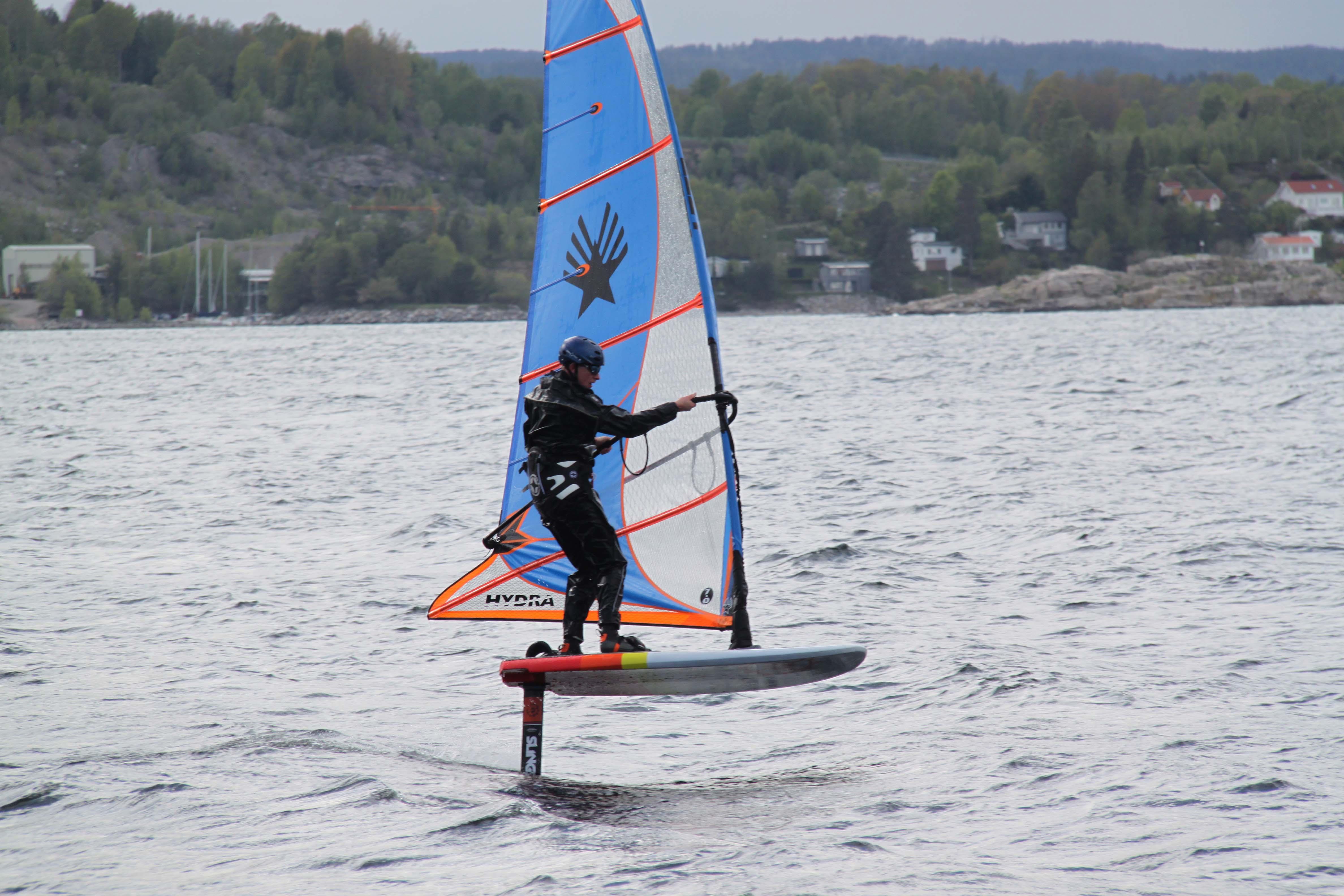
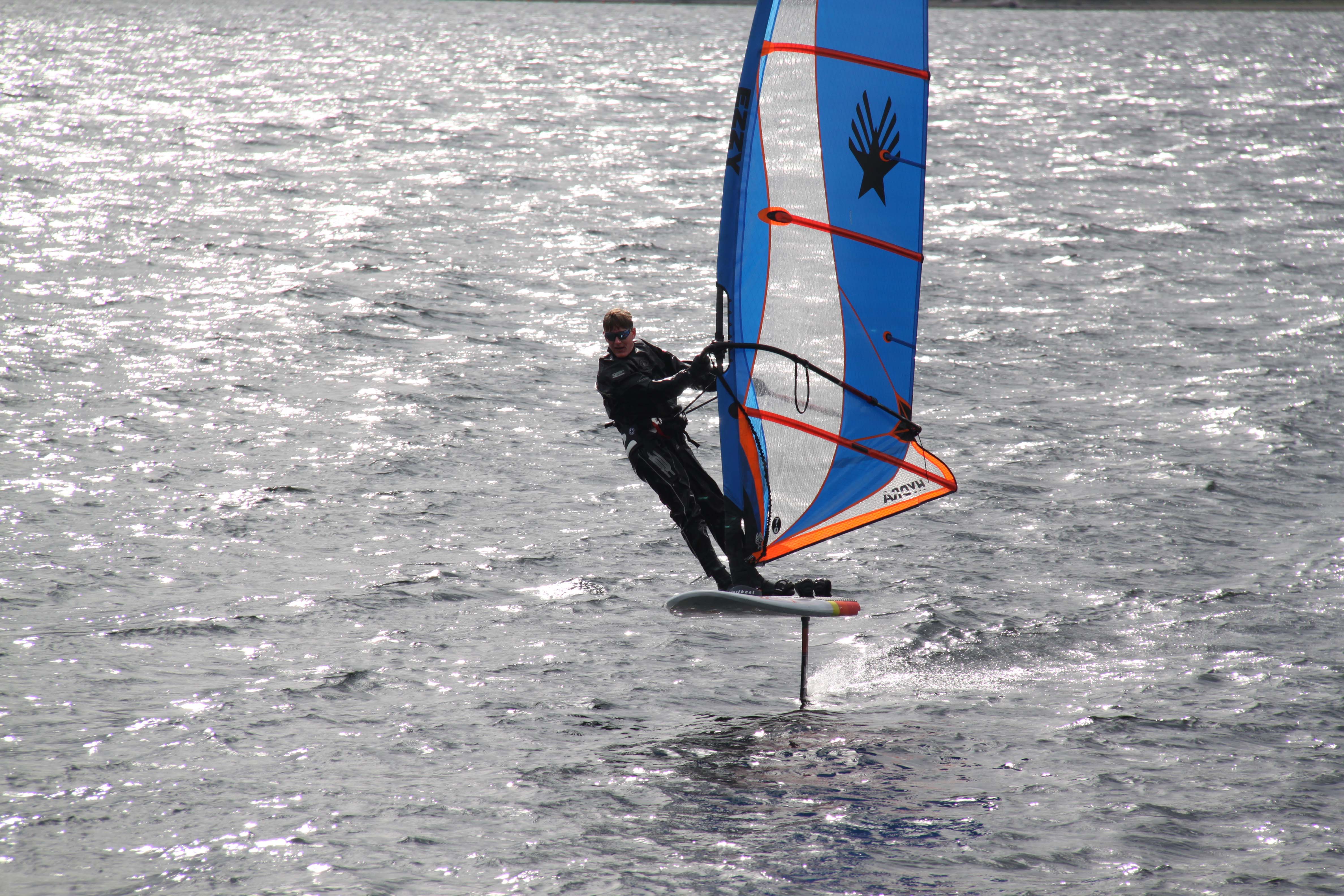
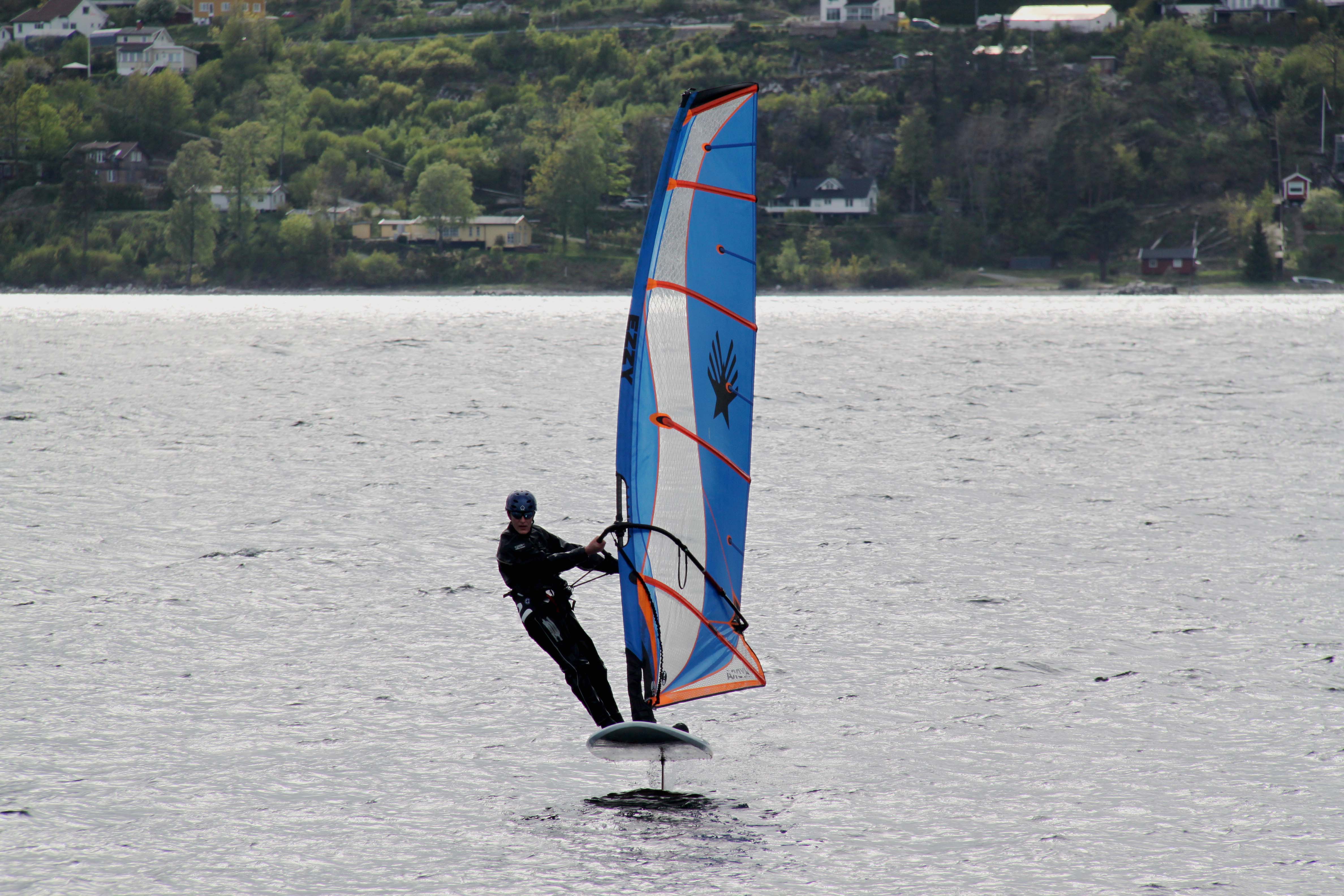
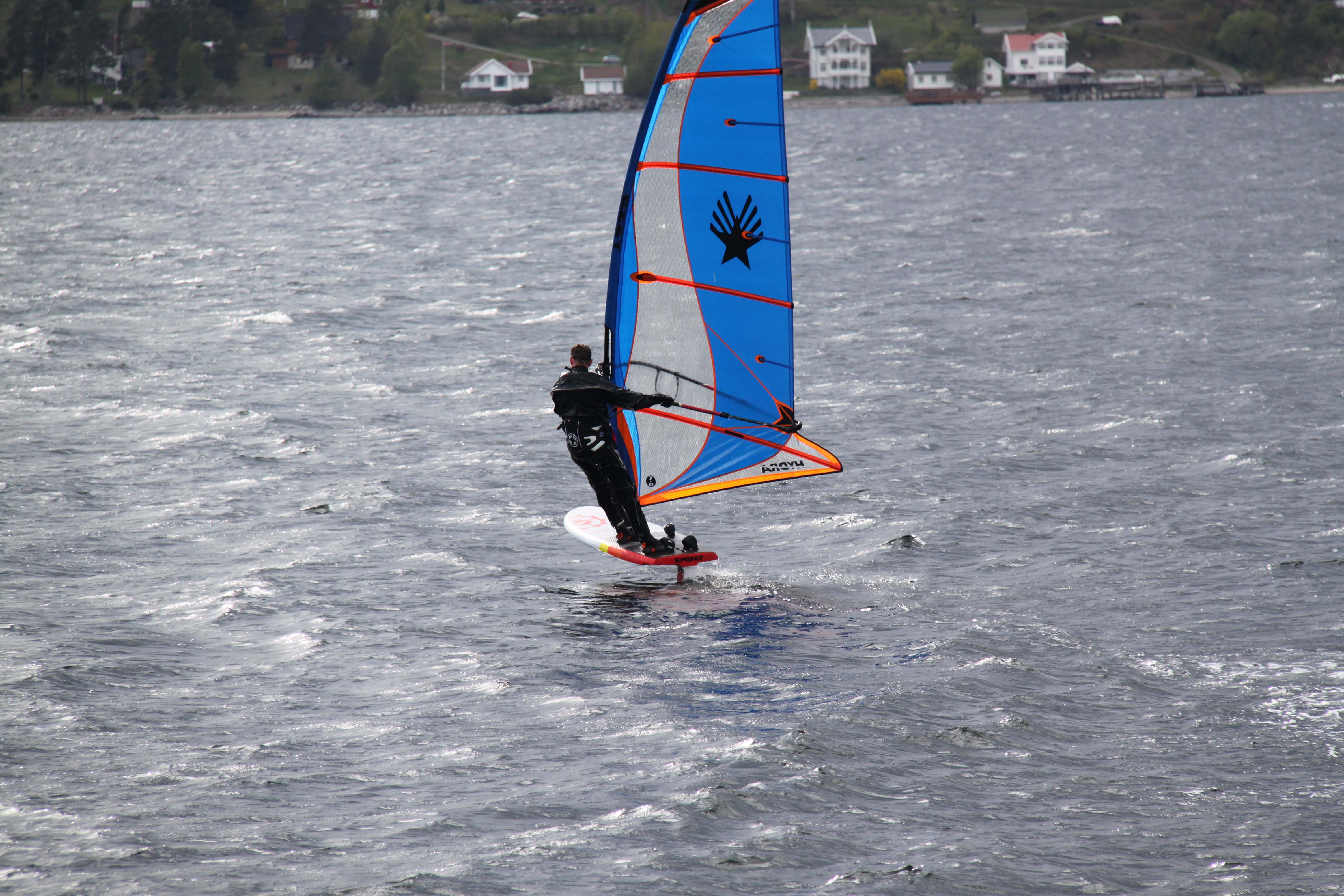
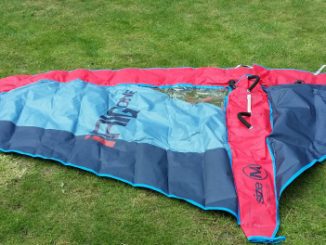
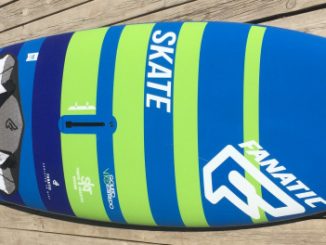
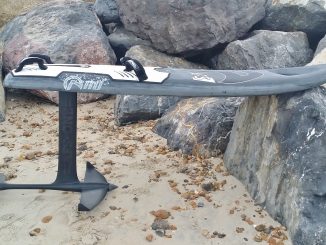
Leave a Reply